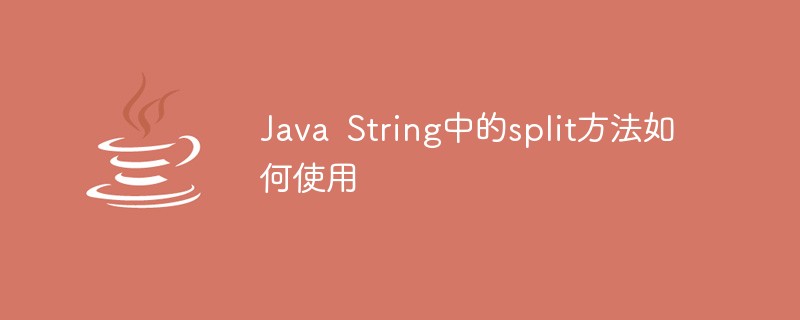
Related learning recommendations: java basic tutorial
There is a simple code below
public class StringPlusTest{
public static void main(String[] args) {
String s1 = "aaa";
String s2 = "bbb";
String s = "ccc" +s1 + s2 +"ddd";
}} Use javap -c .\StringPlusTest.class to decompile and get
Compiled from "StringPlusTest.java"public class com.epoint.codetuning.test.StringPlusTest {
public com.epoint.codetuning.test.StringPlusTest();
Code:
0: aload_0 1: invokespecial #1 // Method java/lang/Object."<init>":()V
4: return
public static void main(java.lang.String[]);
Code:
0: ldc #2 // String aaa
2: astore_1 3: ldc #3 // String bbb
5: astore_2 6: new #4 // class java/lang/StringBuilder
9: dup 10: invokespecial #5 // Method java/lang/StringBuilder."<init>":()V
13: ldc #6 // String ccc
15: invokevirtual #7 // Method java/lang/StringBuilder.append:(Ljava/lang/String;)Ljava/lang/StringBuilder;
18: aload_1 19: invokevirtual #7 // Method java/lang/StringBuilder.append:(Ljava/lang/String;)Ljava/lang/StringBuilder;
22: aload_2 23: invokevirtual #7 // Method java/lang/StringBuilder.append:(Ljava/lang/String;)Ljava/lang/StringBuilder;
26: ldc #8 // String ddd
28: invokevirtual #7 // Method java/lang/StringBuilder.append:(Ljava/lang/String;)Ljava/lang/StringBuilder;
31: invokevirtual #9 // Method java/lang/StringBuilder.toString:()Ljava/lang/String;
34: astore_3 35: return}Among them,
ldc 把常量池中的项压入栈 astore_1 将引用类型或returnAddress类型值存入局部变量1 astore_2 将引用类型或returnAddress类型值存入局部变量2 new 创建一个新对象 dup 复制栈顶部一个字长内容 invokespecial 根据编译时类型来调用实例方法 aload_1 从局部变量1中装载引用类型值 aload_2 从局部变量2中装载引用类型值 astore_3 将引用类型或returnAddress类型值存入局部变量3
For more instructions, please see the JVM instruction manual
For For Java, this code should be in principle:
public class StringPlusTest{
public static void main(String[] args) {
String s1 = "aaa";
String s2 = "bbb";
String s = new StringBuilder().append("ccc").append(s1).append(s2).append("ddd").toString();
}}It can be seen that the implementation principle of using " " to splice strings in Java is to create a temporary StringBuilder object and call the append and toString methods.
Made some modifications to the above code
public class StringPlusTest{
public static void main(String[] args) {
String s1 = "aaa";
String s2 = null;
String s = "ccc" +s1 + s2 +"ddd";
System.out.println(s);
}}What is the result?
You can get the following when running:
cccaaanullddd
View the StringBuilder source code
@Overridepublic StringBuilder append(String str) {
super.append(str);
return this;}This method calls the method that inherits the parent class AbstractStringBuilder, and then goes to the parent class to view
public AbstractStringBuilder append(String str) {
if (str == null)
return appendNull();
int len = str.length();
ensureCapacityInternal(count + len);
str.getChars(0, len, value, count);
count += len;
return this;}private AbstractStringBuilder appendNull() {
int c = count;
ensureCapacityInternal(c + 4);
final char[] value = this.value;
value[c++] = 'n';
value[c++] = 'u';
value[c++] = 'l';
value[c++] = 'l';
count = c;
return this;}## The #appendNull method simply has a capacity of 4 and appends a null string. So the result is "cccaaanullddd".
If you want to know more about programming learning, please pay attention to thephp training column!
The above is the detailed content of In java do you know what String does to '+'. For more information, please follow other related articles on the PHP Chinese website!
 使用java的String.valueOf()函数将基本数据类型转换为字符串Jul 24, 2023 pm 07:55 PM
使用java的String.valueOf()函数将基本数据类型转换为字符串Jul 24, 2023 pm 07:55 PM使用Java的String.valueOf()函数将基本数据类型转换为字符串在Java开发中,当我们需要将基本数据类型转换为字符串时,一种常见的方法是使用String类的valueOf()函数。这个函数可以接受基本数据类型的参数,并返回对应的字符串表示。在本文中,我们将探讨如何使用String.valueOf()函数进行基本数据类型转换,并提供一些代码示例来
 怎么把char数组转stringJun 09, 2023 am 10:04 AM
怎么把char数组转stringJun 09, 2023 am 10:04 AMchar数组转string的方法:可以通过赋值来实现,使用{char a[]=" abc d\0efg ";string s=a;}语法,让char数组对string直接赋值,执行代码即可完成转换。
 使用java的String.replace()函数替换字符串中的字符(串)Jul 25, 2023 pm 05:16 PM
使用java的String.replace()函数替换字符串中的字符(串)Jul 25, 2023 pm 05:16 PM使用Java的String.replace()函数替换字符串中的字符(串)在Java中,字符串是不可变的对象,这意味着一旦创建了一个字符串对象,就无法修改它的值。但是,你可能会遇到需要替换字符串中的某些字符或者字符串的情况。这时候,我们可以使用Java的String类中的replace()方法来实现字符串的替换。String类的replace()方法有两种重
 2w字 详解 String,yydsAug 24, 2023 pm 03:56 PM
2w字 详解 String,yydsAug 24, 2023 pm 03:56 PM大家好,今天给大家分享java基础知识之String。String类的重要性就不必说了,可以说是我们后端开发用的最多的类,所以,很有必要好好来聊聊它。
 使用java的String.length()函数获取字符串的长度Jul 25, 2023 am 09:09 AM
使用java的String.length()函数获取字符串的长度Jul 25, 2023 am 09:09 AM使用Java的String.length()函数获取字符串的长度在Java编程中,字符串是一种非常常见的数据类型,我们经常需要获取字符串的长度,即字符串中字符的个数。在Java中,我们可以使用String类的length()函数来获取字符串的长度。下面是一个简单的示例代码:publicclassStringLengthExample{publ
 java的String类如何使用Apr 19, 2023 pm 01:19 PM
java的String类如何使用Apr 19, 2023 pm 01:19 PM一、认识String1.JDK中的String首先我们看看JDK中的String类源码,它实现了很多接口,可以看到String类被final修饰了,这就说明String类不可以被继承,String不存在子类,这样所有使用JDK的人,用到的String类都是同一个,如果String允许被继承,每个人都可以对String进行扩展,每个人使用的String都不是同一个版本,两个不同的人使用相同的方法,表现出不同的结果,这就导致代码没办法进行开发了继承和方法覆写在带来灵活性的同时,也会带来很多子类行为不
 Java String中的split方法如何使用May 02, 2023 am 09:37 AM
Java String中的split方法如何使用May 02, 2023 am 09:37 AMString中split方法使用String的split()方法用于按传入的字符或字符串对String进行拆分,返回拆分之后的数组。1、一般用法用一般的字符,例如@或,等符号做分隔符时:Stringaddress="上海@上海市@闵行区@吴中路";String[]splitAddr=address.split("@");System.out.println(splitAddr[0]+splitAddr[1]+splitAddr[2]+splitAddr[3
 Golang函数的byte、rune和string类型转换技巧May 17, 2023 am 08:21 AM
Golang函数的byte、rune和string类型转换技巧May 17, 2023 am 08:21 AM在Golang编程中,byte、rune和string类型是非常基础、常见的数据类型。它们在处理字符串、文件流等数据操作时发挥着重要作用。而在进行这些数据操作时,我们通常需要对它们进行相互的转换,这就需要掌握一些转换技巧。本文将介绍Golang函数的byte、rune和string类型转换技巧,旨在帮助读者更好地理解这些数据类型,并能够熟练地在编程实践中应用


Hot AI Tools

Undresser.AI Undress
AI-powered app for creating realistic nude photos

AI Clothes Remover
Online AI tool for removing clothes from photos.

Undress AI Tool
Undress images for free

Clothoff.io
AI clothes remover

AI Hentai Generator
Generate AI Hentai for free.

Hot Article

Hot Tools

SublimeText3 English version
Recommended: Win version, supports code prompts!

SAP NetWeaver Server Adapter for Eclipse
Integrate Eclipse with SAP NetWeaver application server.

WebStorm Mac version
Useful JavaScript development tools

SublimeText3 Linux new version
SublimeText3 Linux latest version

MinGW - Minimalist GNU for Windows
This project is in the process of being migrated to osdn.net/projects/mingw, you can continue to follow us there. MinGW: A native Windows port of the GNU Compiler Collection (GCC), freely distributable import libraries and header files for building native Windows applications; includes extensions to the MSVC runtime to support C99 functionality. All MinGW software can run on 64-bit Windows platforms.






